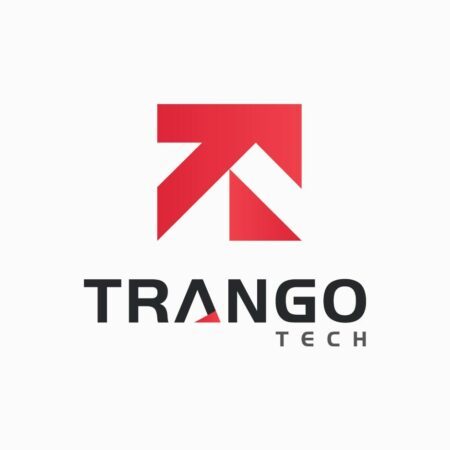First and foremost, mobile app development trends are defined by demand. In 2020 one of the consequences of the COVID-19 pandemic was a dramatic spike of demand for certain mobile app categories. Number of downloads for Zoom, Google’s Meet, Microsoft’s Teams went through the roof and, at some point, the capitalization of Zoom surpassed Boing. Mobile apps that were helping people to adapt and cope with the disease became extremely popular and – to meet quickly rising demand – companies had to heavily invest in the development of these apps to increase their capacity and bring new features.
This year 2021 – because the pandemic is still here – it’s completely justified for video conferencing, delivery, remote education and media streaming mobile apps to continue dominating the mobile landscape. At the same time, as multiple vaccines are administered to millions of people around the globe, we should expect reliance on these platforms at some degree decreasing but as of right now the demand is still really high.
There are several mobile technologies that are instrumental in the worldwide effort to adjust to life during the pandemic. One of those technologies is 5G, that has been rolling out in US by both AT&T and Verizon. The major advantage that it brings on the table is a new information transmission speed that is on par with high-speed Wifi networks. In the fall of 2020 Apple launched iPhone 12, the new model that supports 5G standard, laying out the ground for many iOS apps to make the next step in the development and bringing new features that weren’t possible before.
Another feature that showed up on the app developers radar in 2020 and will certainly continue to be extremely important is privacy. It’s something that was neglected for a number of years when the entire app development ecosystem was solely focused on growth. Things have definitely changed – in 2021 app developers will absolutely need to factor in the matter of their users privacy and address the question of user information capturing, storing and processing. Both European GDPR and growing number of US regulations have set the standard for a mobile app user privacy.
For the last several years, one of the features that really moved the needle for wearables devices was fitness and medical applications. Having sensors on your wrist all the time opens up a bunch of opportunities for app developers to explore. The latest improvement of the Apple Watch sensor to analyze the human body’s bloodstream allowed to measure the level of oxygen in the blood which is a vital parameter to monitor people for possible COVID-19 virus contraction.
The constant satellite of a mobile hardware development is an ever-increasing amount of information to capture, analyze and discern patterns based on this information. No doubt – 2021 will witness new advances in Machine Learning to make sense of all sorts of data captured by optical and audio sensors.
Featured App Developers
One of the dark pages of 2020 was the increasing number of digital security breaches that led to serious financial and political consequences. In 2021 app developers will simply must factor in the latest advances in software security to meet the challenge. The significance of the problem is really hard to overestimate, the times when computer systems hacking by amateurs for the sake of satisfying their ego are gone, today state actors are involved and it rises the bar of mobile software security to the next level.
The common themes are:
- Because of the worldwide impact of the COVID-19 pandemic, wearable technologies, specifically medical devices, for instance, to track level of oxygen in the blood, will get a significant boost in development. As well as app categories such as E-learning, Social Networking, Communication, Video, Finance and Games will continue to be in a high demand.
- Internet of Things technology will finally get the major enabler such as widely available 5G (both infrastructure and smartphones such as iPhone 12 and number of Android running OS phones that support it) to make houses, and to a degree, cities smart, connecting mobile devices with a big number of sensors.
- Cross-platform app development will continue to provide a smart solution for businesses that need a single cross-platform mobile solution to save money on development for multiple mobile platforms.
So these are the major topics from a number of quotes we’ve got from the leading app development companies you can read below.
App Development Thought Leaders
Octal Software – Arun Goyal, Managing Director
“Well, predicting what technology has for us in the future is more like just preparing yourself for the unseen. It has been surprising us with some of the best advancements in the past few years. The increasing role of AR/VR in mobile app development is one thing we are very affirmative about. Along with this, IoT is another technology that adds expectations. It would strengthen the market here. With the rise of enterprise mobility, we do expect technology would make it easier for professionals to communicate and synchronize various devices in a more secure and safer way.”
Technostacks Infotech Pvt Ltd – Hansal Shah, Co-founder & Director
“Industrial automation as most of the industries is working on digitalizing their process using smart technologies.
– E-Learning and Online video conferencing. Due to pandemics, we all understood it’s possible to learn online. This may bring revolution in getting foreign degrees of your choice of universities and do your assignments with global classmates.
– Healthcare IoT and analytics to make healthcare more intelligent and advanced. – Industries & govt bodies will focus more on environment balancing and reducing the impact of their production contributes to the lowest on climate change.”
Promatics Technologies Private Limited – Arpit Jain, Managing Director & CEO
“As the mobile app development industry continues to evolve I see quite a bit of technological advancements in 2021. Firstly I predict that 5G will finally take baby steps this year. With Apple adopting it in its latest line of iPhones the incentive to build apps around 5G is increasing. It will also help developers build better IoT apps and services that can result in endless opportunities. IoT and 5G are made for each other. While the former was ready to roll for sometime now; it needed the latter’s support to go mainstream. 5G brings blazingly fast high speeds with nearly zero latency and that will give app developers enough food for thought.
The second trend I foresee is wearable development. The pandemic has made the wearables market grow at an astounding CAGR of more than 20%. That means more and more people are using things like smartwatches, health and fitness accessories, etc. And if that is increasing it is natural that the demand for supporting apps will grow.
I can also see an increase in demand for cross-platform app development. With significant improvement in cross-platform development tools and coming of age frameworks like Flutter, the difference between native and hybrid apps is receding day by day. Add to it the benefits of maintaining and supporting a single code base with fewer incubation costs this seems to be a no-brainer for some industry experts.”
Pocket App – Paul Swaddle, Chairman & Co-Founder
“This year will see more businesses implementing internal apps to support processes from HR to Sales. Now more than ever businesses are looking at mobile to transform business process. Mobile transformation can and does save money and improve accuracy and speed.”
Dot Com Infoway – Venkatesh C.R., CEO
“iOS – I would expect an improvement in both customer and business-centric features. Should be attuned to the customers’ specific service requirements and be really foolproof in terms of data security. In terms of its suitability for businesses, a low cost of maintenance, provision of secure payment, security breach guarantee and convenient updates procedure would be important. Privacy updates are something that I would expect iOS to work on as that is a pressing concern with many.
Android – One would expect 5G to be a standard feature on all android gadgets. I also expect Microsoft to take over Nokia completely and come out with another android phone. I also expect Android Instant apps, as well as Multiplatform to be quite a rage.
Key technologies that will shape app development this year – Would be AL, ML, Robotic Process Automation, Blockchain, AR, VR, IoT, and 5G.
Cross-Platform App Development – Cross platforms apps will be more relevant, on account of the steep increase in the cost of platform development and the need to reach the market in double-quick time. Legacy apps just serve only specific purposes in the current scenario.
AR/VR – More as the expected sales of AR and VR headsets are expected to be $9.7 billion in 2021. Trends to look out for are AR Avatars(on YouTube for example), AR Indoor Navigation (positioning. Mapping, and rendering), and the use of VR training in the retail sector, as well as in the education sector and demographically relevant native advertising.
State of IoT – Yes, it will with more than 35 billion online smart devices expected to be in use by the end of 2021. The major challenge will be in upgrading the security of these devices, though.
COVID-19 Impact on App Development – The surge in Coronavirus infections caused a large scale adoption of technology towards remote operations, leading to a surge in demand for apps, which has had a positive impact on the development of apps. People in general, have increasingly started relying on apps to go about the business of life. Everything from grocery shopping, banking, entertainment, communication, and marketing is carried out with the help of downloads, the number of which has skyrocketed.”
Arateg – Andrew Volchek, CEO, Co-founder
“I expect 2021 to be the era of 5G rising. In its turn, 5G plus Wifi 6 technologies will strongly stimulate IoT and the next level of mobile app development. Our homes and enterprises will become smarter and more automated, controlled by a smartphone button.
As for the COVID-19 impact, it is still shaping the brand new reality and will do it next few years. This means the growing number of apps for the convenience of remote work, online conferences, m-learning, m-commerce, etc.
The world is expected to witness AI and ML becoming more and more regular practice, especially AI-enabled chatbots development and usage. It’s one more step to the world’s digitization and automation, allowing to provide instant client support and enhance customer experience.
Blockchain implementation will definitely be not just hype but remain on top of the tech trends for 2021. Cryptocurrencies are in demand, so new apps are going to appear on the crypto scene. Enterprises and SMEs will use blockchain technology to create high-scalable and performant apps in healthcare, logistics, finance, insurance verticals, etc.”
Infinum – Ivan Đikić, Head of Mobile
“2020 was a very challenging year for everyone and the healthcare industry really came through with rapid vaccine development. I think the healthcare sector still has some untapped potential. Telemedicine and adherence apps keep getting better and they can be used quite effectively to improve peoples’ lives. Looking at Apple’s example, they certainly notice the potential there and have been gradually adding and improving their hardware for measuring vitals. This is also an indicator in which direction the industry might move.
On the mobile development front, cross-platform is still relevant and Flutter is on the rise as it offers a slightly different approach to building mobile applications than its competitors. Only time will tell if it gets a lot of traction in the market. In addition, both iOS and Android are moving towards declarative UI building, similar to Flutter. In 2021, we will probably have the chance to use those new SDKs a bit more.
Currently, the market is somewhat saturated with mobile development, but there are still many businesses that haven’t moved away from the traditional ways of working: Some are still operating on paper and excel sheets! The COVID-19 pandemic could speed up the transition. On the other hand, there is a lot of uncertainty and caution at the moment and I don’t believe we reached the peak of the economic impact yet, so it remains to be seen what will actually happen.”
The Distance Agency Ltd – Anthony Main, Managing Director
“The physical technology trends were very gimmicky during 2020 and early 2021, with the introduction of folding and rollable devices. Whilst these form factors may become a part of the ecosystem they are still very niche and unlikely to become mass market and therefore little concern for developers.
The impact of COVID and international lockdowns has seen a boom in self-help apps from wellbeing through to food delivery services. We expect this trend to continue as more verticals embrace mobile and the convenience it provides customers.
Peoples outlook on traditional employment and a 9-5 job is changing. Individuals want more flexibility in their life and variety in their roles, therefore 2021 is expected to see a huge boom in gig-economy opportunities. These are most likely to be supported through mobile technology to facilitate the formalities and processes of the engagement.
The maturity of cross-platform technology, specifically React Native and Flutter has established a benchmark for multi-platform software and the swell towards these frameworks will continue to gain market share over their native equivalents. Whilst purists will continue to develop natively the majority of use cases can be perfectly supported using the ever-improving cross-platform solutions.
The larger social platforms have had a significant hit over the last few years and users tend to be flocking towards more niche networks where the have more control over their privacy and will feel less alienated with irrelevant advertising. A more focus community will provide a much more engaged user base for all involved.”
ELEKS – Sergii Bataiev, Head of the Software Architecture Office
“The development of native mobile apps remains a popular option, as native apps provide fast access to the feature set of a mobile phone, including LiDAR, the camera, GPS, and so on. Despite the high cost of development for each platform, native apps are high-performing and fast.
Cross-platform mobile development is another type of app development that allows your product to run on multiple mobile operating systems and is written in a single programming language. By using a cross-platform development approach, you have a lucrative opportunity to create an app that will be appealing to Android, iOS, and other OS users without high development costs.
Two of the most popular cross platform frameworks are React Native and Flutter. As you’re likely to have already heard a lot about React Native, which is growing and getting more support from the developer community, let’s focus more on Flutter.
While Flutter may be surging in popularity in the world of cross-platform development tools, it is certainly not perfect. Flutter could eventually be a good alternative for mobile app development, but there are currently few success stories about the framework in the market. Companies investigate and play around with the technology, but there’s still a gap in the knowledge needed to develop successful and maintainable apps based on Flutter.
Another approach that is steadily becoming more popular is the use of Progressive Web Apps (PWAs). Year on year, as PWAs offer an increasing range of features to users, more companies are migrating their mobile applications to the PWA approach.
This approach has many benefits in comparison with native and cross-platform app development. For example, with native and cross-platform apps, updates usually require action from both the company and the user: the company publishes an updated version of the app and the user has to download it. With a PWA, the app is always loaded from the server, so companies are able to make background updates without the need for any action from the user.
However, PWAs have rather limited access to device hardware and functions. While Android-based devices allow some options for PWAs, Apple limits access on iOS devices.
**A PWA has a single codebase for all platforms. The app works as a responsive website or a mobile app depending on the user’s device. It doesn’t require a download, so many users have no idea that they are using a PWA.
Many originally thought that use of AR and VR would be limited to the tourism and healthcase domains, where people like to experience everything before then go ahead by put their money into a booking. This theory was smashed into pieces when Pokémon Go was released. Pokémon Go singlehandedly became the flag bearer of Augmented Reality and showed that today’s user is ready for user experiences with cross-screen functionality.
Technological giants like Apple and Google are already innovating tons of new use cases for AR. For example, Google has already introduced a new AR feature for Google Maps, which would provide users with directions from their camera phones in real-time. As Apple introduced the LiDAR scanner’s is crunched together with cameras and a motion sensor, then “enhanced by computer vision algorithms for a more detailed understanding of the scene.” In other words, there’s a lot going on to make it appear seamless.
Thus, in 2021, AR integration will be one of the essential mobile app development trends shaping the mobile industry by creating a seamless experience for users.”
Quytech – Siddharth Garg, Director
“Mobile apps that have emerged to new heights during the pandemic are serving as the saviour amid lockdown and social exclusion. The wave of digitization, along with the ongoing developments in the app development industry, have saved us from falling apart. Going forward, we foresee that trends such as Artificial Intelligence Augmented Reality, and Virtual Reality are going to rule the roost in app development this year. As a matter of fact, these are going to have starring roles in enhancing experience for Android and iOS users.
In the healthcare and the fitness domain, we are likely to see growing customer preference for fitness wearables, majorly among the millennial. Moreover, the integration of AI and Machine Learning in mobile apps shall be a common occurrence in 2021. In the gaming industry; cloud gaming, besides AI and VR would continue to be the dominating trend. In the sports industry, we foresee that the trend of gamification will continue.
In today’s digitalization-based world, the concept of IoT is well fostering the revolution of mobile application. Needless to say, it will gain more significance in the mobile app development company this year.”
Konstant Infosolutions – Vipin Jain, CEO/Co-Founder
“Technology that comes out of an innovative trend must have the capacity to make informed and uninformed people speculate, understand the pitfalls, and the possibility of smart solutions. The trends in app development will go around saving time and being resourceful.
Not many of us dedicatedly use that app that we install on our smart devices. For our non-technologist clients, we aim to give the reason to not look for alternatives, stay ahead of schedule from our competitors in bringing about the best on the table. We believe business applications – internet connectivity(5G) – email apps – multimedia titles – authoring tools – cryptocurrencies – GPS – Fitness Trackers – Everything-on-Demand – Banking Apps to be the foundation for the next revolution. With the abundance of information, users will be curious about big data/analytics, which will cause the deep-tech start-ups to imbibe smart AI assistants into their apps to accelerate digital adoption. Virtual reality applications will evolve with a surge of business seekers.
Some choices in web and mobile development will be based on ambitious franchising plans and unit-level profitabilities. They might become the supersets of today’s software. Plus, graphics and animation will be potent and help handle real-time content. Over time, these apps will assume a trusted place beside our gadgets. They’ll save time, labor and offer convenience. A new generation will grow with them, changing and humanizing these for the better.”
Intellectsoft – Tim Kozak, Senior Solution Architect
“Mobile technology is improving at an incredible pace. The power of tablets and phones has quietly equalized to laptops’ power and now allows us to perform tasks that weren’t possible before. Smartphones are getting closer to us, opening houses and starting cars. We buy, listen, and communicate through apps. Moreover, given today’s realms, we began to spend much more time with smartphones. I think by 2021, these convergence trends will only escalate.
– In terms of applications, I foretell the transfer of many heavy products (audio-, video-, photo-, 3D-, code- editors, desktop games) to tablets and a strong blurring of the boundaries between mobile and desktop applications. Now you will have to choose between touch or conventional interfaces.
– We’ll see the new opportunities and big picture behind the concept of AirTags / SmartTags.
– The emergence of cases using 5G on the full steam.
– A new round of pro app development with strong AR and LIDAR features.
– Cross-platform applications will be even more successful and become the de facto standard requirement for originating new businesses and services.
I am looking forward to and believe 2021 will be a truly remarkable and revolutionary year.”
Inspire Visual – Michael Frederiksen, Co-founder and Creative Director
“There are currently 5.7 million apps in the Google Play Store and Apple’s App Store and a good App Store Optimization (ASO) strategy is key to maximize visibility by getting ranked high on the app charts, no matter how unique or groundbreaking an app is.
In our many years of app development, we’ve seen especially one fundamental mistake made by app publishers; underestimating the importance of keyword research and optimization. Proper keyword research is done by first describing your app’s functionality with multiple unique words and short phrases. Also look at your top competitors to see what keywords they are using that you may benefit from. Then import those words into a keyword research tool like Ahrefs Keyword Planner or KWFinder. Pick about 80 keywords with low keyword difficulty (competitiveness) and a high traffic volume to get a better chance of being ranked at the top of the app category charts.
At Inspire Visual, we use proprietary tools to optimize ASO and to the great success of our clients. We also use third-party tools like SensorTower, App Annie, Google Keyword Planner, and Ahrefs.
If you are publishing a cross-platform app in both Google and Apple’s App Store, there are some differences to the process. Both have a 70/30 profit-sharing model, meaning they take 30% of app revenue to pay for the listing. Apple users are more likely to pay more for an app than Android users. The publishing process has some differences, too long to include all here. Generally, it’s a painless process for both platforms and can usually be done within a few days from submission to publishing.
When publishing an app, we stress to our clients the importance of displaying the app at it’s absolutely best. Pick the best screenshots and include video to quickly demonstrate key benefits and entice app users. Knowing the exact dimensions and requirements for each store so images are not stretched or low quality and descriptions are not too long are essential. The first 3 lines of an app description are the most important, as they will be displayed before the “more” button hiding the rest of the description.”



















